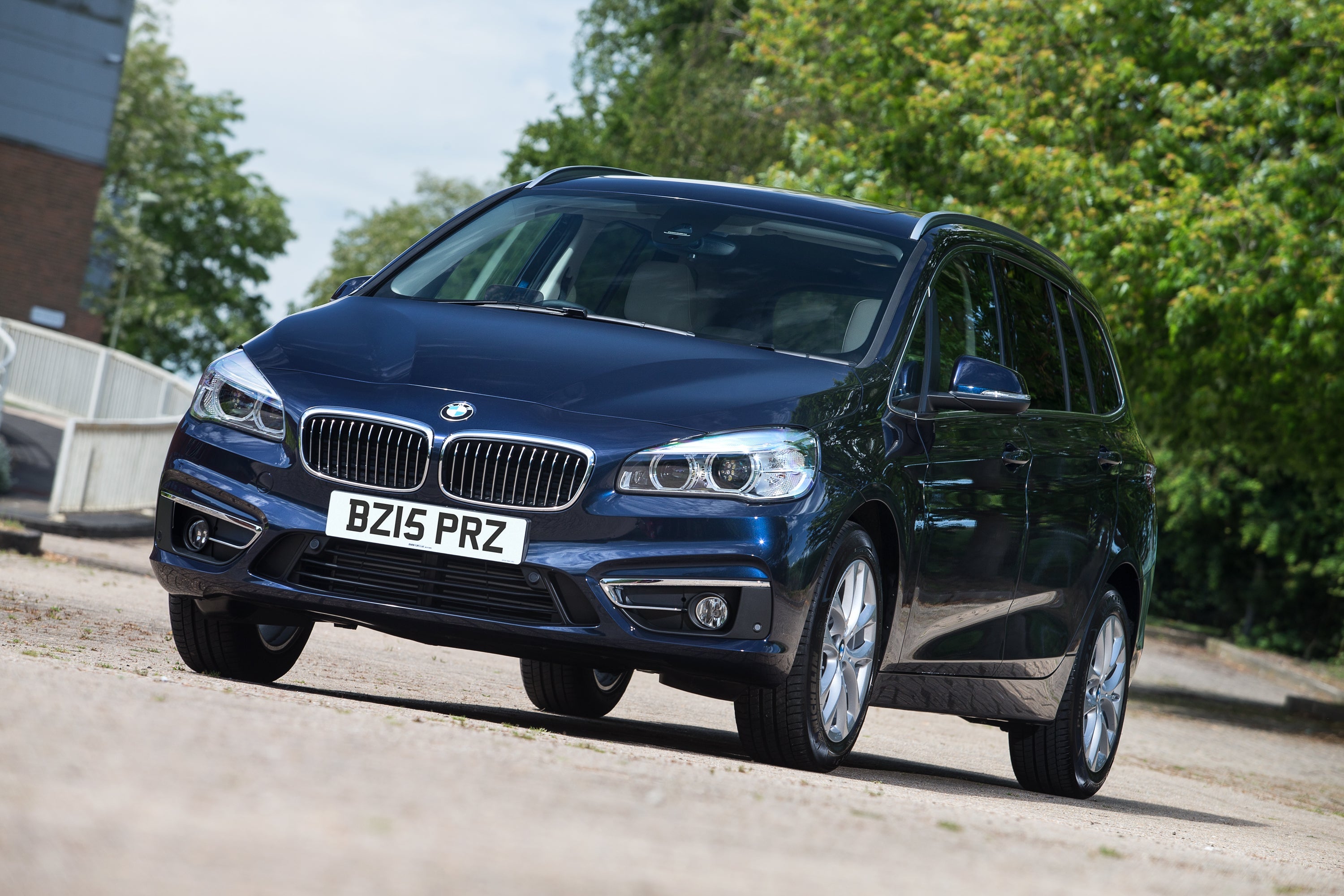BMW 2 Series Gran Tourer (2015-2021) Review
Written by Andrew Brady
Quick overview
Pros
- Feelgood driving experience
- Well equipped
- Practical and seats up to seven
Cons
- Dull to look at
- Third-row seats are not for adults
- 216d diesel is a bit underpowered
Overall verdict on the BMW 2 Series Gran Tourer
"It might not be the first choice of MPV and BMW purists may shudder at the thought, but for those who need a seven-seat people carrier and don’t want to compromise on behind-the-wheel enjoyment, we’d certainly recommend checking out the 2 Series Gran Tourer."
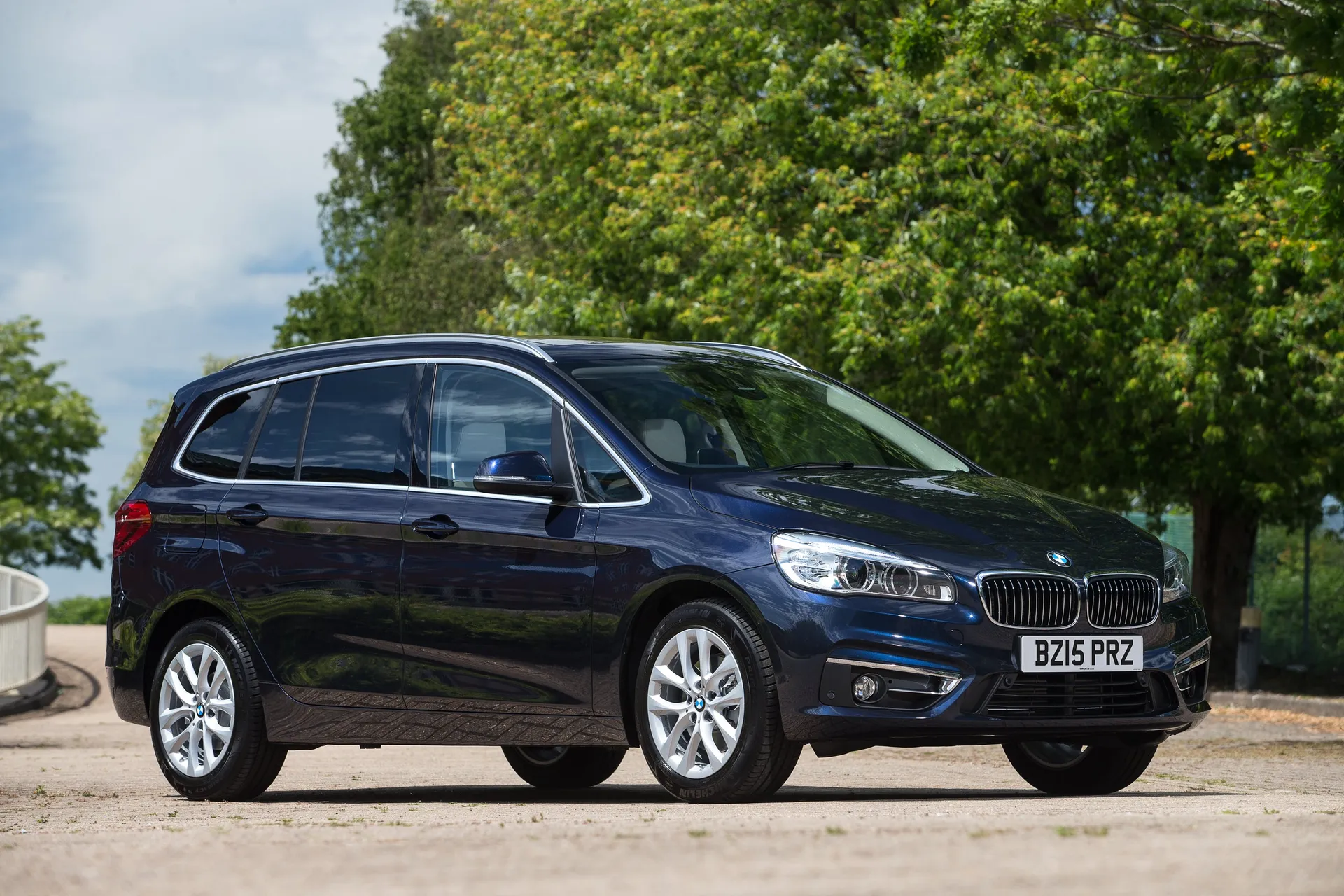
In 2015, the front-wheel-drive BMW 2 Series Gran Tourer arrived, as the seven-seat alternative to the BMW 2 Series Active Tourer five-seat MPV. This BMW 2 Series Gran Tourer review talks through the longer wheelbase and taller rear end that sets the Gran Tourer apart from its Active Tourer sibling.
BMW has since discontinued the 2 Series Gran Tourer, leaving just the 2 Series Active Tourer. Likewise, the alternative BMW X1 only seats five, for example, and you need to spend much more for a BMW SUV that can accommodate seven.
Visually, it was a bit nondescript. That’s almost inevitable with MPVs, which are designed for maximum interior space first and foremost. It still got the classic kidney grille, though, and BMW offered some sporty-looking variants with large alloy wheels and smart trim details.
Inside, it was more authentically BMW. It had a contemporary layout similar to the brand’s other models, with the trademark widescreen infotainment system and a good-to-hold steering wheel. The instruments were clear and the rest of the layout was logical. The seats in M Sport versions were among the best you could find in any seven-seater at the time, feeling more like those from a BMW M sports car than a family-focused people carrier.
The BMW 2 Series Gran Tourer ranked highly for interior practicality. The middle row of seats was adjustable, sliding back and forth and offering adjustable backrest angles. The seats were easy to get in and out of too. The third row was much more restricted and frankly didn't offer adult-friendly space, despite the bulkier rear roof line. But for kids, they were fine and folded flat into the boot floor when not needed.
Inside, there were loads of little cubby holes and stowage slots, and BMW even offered a fold-flat front passenger seat so really long loads could be threaded in with all the rear seats folded. The electric tailgate was convenient too, particularly as it could be opened via the key fob remote: perfect for parents with full hands and excitable children.
There was no such thing as a poorly-equipped BMW 2 Series Gran Tourer. Even the standard SE variant came with a great haul of standard equipment, including BMW iDrive sat nav, dual-zone climate control, alloy wheels and automatic headlights. Moving up through the range brought leather upholstery and bigger alloy wheels, but the differences were largely visual.
All the engines were turbocharged units, with either three or four cylinders. This was the era of vehicle that majored in diesel power, with a broad range of choices ranging from entry-level 216d through to the 220d, which came with an xDrive four-wheel-drive option alongside the regular front-wheel drive. The 218i and 220i petrol versions were rarer but are worth searching for.
Although the lower-powered versions were not exactly rocket ships, it was still a surprisingly authentic BMW to drive. That was thanks to its excellent handling, with genuinely engaging dynamics, including roll-free handling and nicely weighted precise steering. The ride was on the firm side for an MPV, but still on the right side of comfortable unless you chose the models with the largest alloy wheels. We can almost guarantee the BMW 2 Series Gran Tourer drives much better than you might expect.
Being a premium car, prices were on the steep side for seven-seat MPVs when new, but a few years on, the 2 Series Gran Tourer is looking much better value for money – particularly if you take one of the fancied Sport or M Sport variants. With BMW’s sophisticated engines serving up great fuel economy and low tax bills, it shouldn’t prove too costly to run either.
Looking for a used car for sale? We've got 100s of BMW Approved Used Cars for Sale for you to choose from, including a wide range of used BMW 2 Series Gran Tourer cars for sale.
Is the BMW 2 Series Gran Tourer right for you?
Having a growing family needn’t put a stop to your BMW ownership. The BMW 2 Series Gran Tourer was the most practical BMW the firm offered of this size, with a superbly flexible interior that was just as focused on passengers as on the driver.
You may prefer the more contemporary styling of the BMW X1 SUV, but it’s not a patch on the 2 Series Gran Tourer when it comes to accommodation. The fold-flat emergency rear seats are a real bonus, almost certainly proving invaluable at least for parents who tackle the school run and other family missions.
It can be your secret ‘warm hatch’ too – a car that looks thoroughly conventional and decidedly MPV-like but handles with far more verve than you would expect. You’ll almost certainly enjoy it more from behind the wheel. And that’s no bad thing, right?
What’s the best BMW 2 Series Gran Tourer model/engine to choose?
Diesel dominated the BMW 2 Series Gran Tourer line-up. Frankly, the 216d was not really powerful enough, particularly when this seven-seater was used as nature intended. It only had 116PS, meaning it bogged down a bit too easily – and it was only available with a manual gearbox.
Start with the 218d, which had a good blend of affordability and performance. We'd ideally take it with BMW’s smooth-shifting automatic gearbox if you can find one. The 218i was a perfectly fine petrol alternative, though: it produced 136PS and the 1.5-litre three-cylinder turbo engine had enough in reserve to make light work of hills. It was actually the same engine used in the Mini Cooper.
At the top of the range, BMW offered an xDrive four-wheel-drive version. For those who wanted to guarantee progress in all weather, it’s well worth looking out for. However, the 220d xDrive is a rare sight on the second-hand car market.
What other cars are similar to the BMW 2 Series Gran Tourer?
The BMW 2 Series Gran Tourer's premium rival was the Mercedes-Benz B-Class – although, even today, this only seats five people to the BMW’s seven. Audi doesn’t offer an MPV, encouraging buyers into SUVs instead. The closest thing it offers is the Q5.
It’s the non-premium makers who offer the closest alternatives to the BMW 2 Series Gran Tourer. The Volkswagen Touran comes in a seven-seat guise, for example, as does the Peugeot e-5008, the Skoda Kodiaq and the Dacia Jogger.
Comfort and design: BMW 2 Series Gran Tourer interior
"People carriers usually go big on comfort, but the BMW was a little different in this respect. It still served up a dash of sporty excitement, despite being MPV-focused. You could sense this as soon as you stepped in: the driving position felt good, in contrast to the more van-like arrangements of rivals, and the driver was treated to a chunky steering wheel and sporty gear lever."
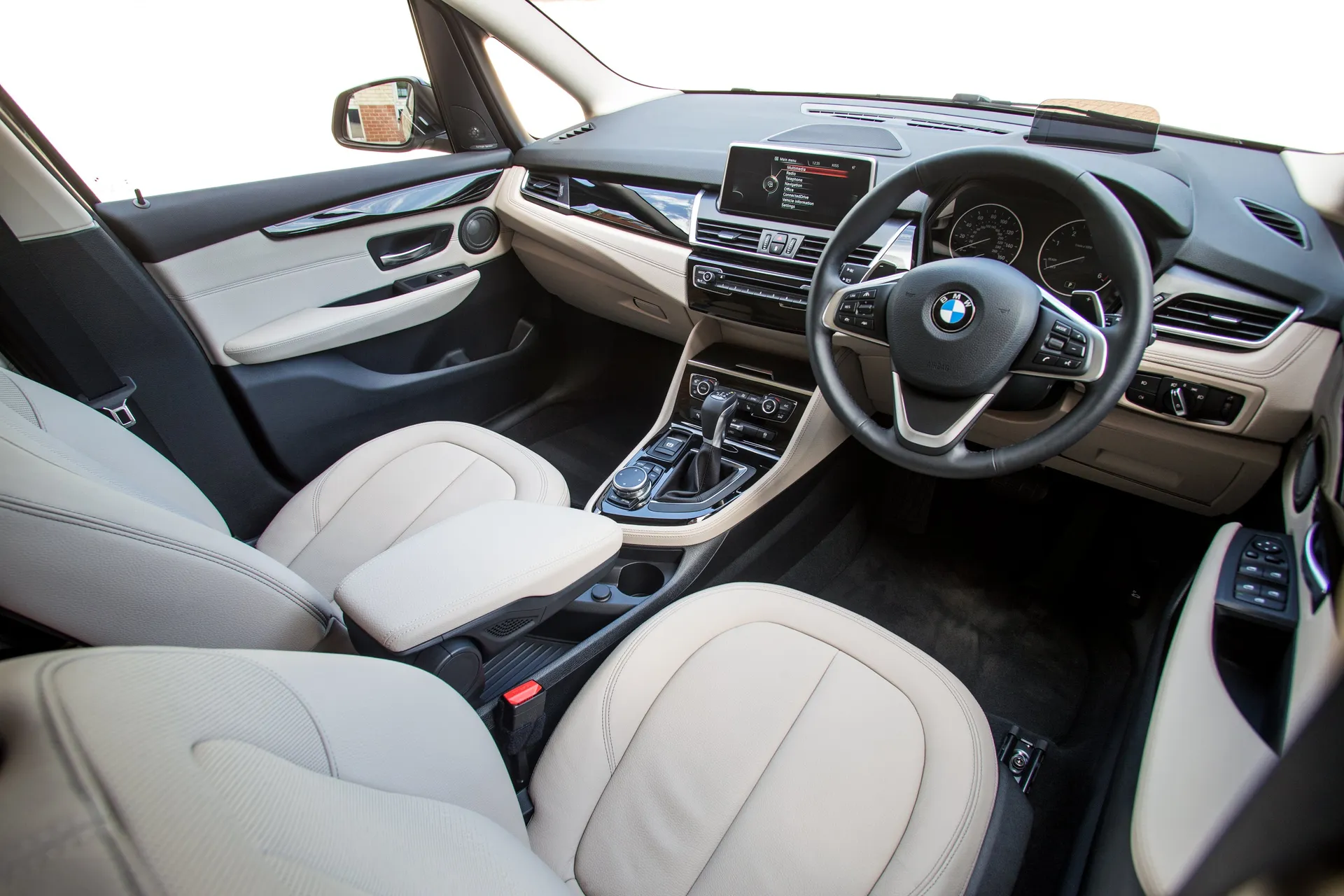
Seats were firm and supportive, rather than soft and lounge-like. The best chairs, with the nicest leather upholstery, were fitted to M Sport versions, but even the seats in the base-spec SE were nicely bolstered. It had a similarly firm and supportive set-up in the rear, although the third-row seats were probably a bit too hard and thinly padded to be truly comfortable for anyone but small children.
The design will be familiar to those who have driven other BMWs. It wasn't particularly flashy or exciting, in the way some Audis are, but it was impeccably laid out and very logical. The dials were clear, the infotainment well-placed and there were a few nice touches such as the sculpted door pulls and driver-focused centre console.
The same sort of upmarket dashboard trims found in other BMWs were also available here. Again, M Sport had the flashiest detailing, while Sport offered a bit more focus than the regular SE. There was also a Luxury trim variant, which was nice enough, but we prefer the sportier alternatives and think they better suit the BMW 2 Series Gran Tourer’s hidden racy edge.
Quality and finish
Premium car makers know they have to finish their cars to a higher standard than more mainstream competitors. That’s one of their USPs - buyers expect it and the higher prices they charge should certainly justify it. The same went for the BMW 2 Series Gran Tourer, which certainly had a more substantial feel inside than some of its non-premium rivals.
The plastics perhaps weren't as indulgent as in something like a BMW 3 Series, but they were still robust and generally nice to the touch. The top part of the dashboard had a nice feel and some of the high gloss black trim inlays were good-looking (albeit also fingerprint magnets). Steering wheels were good to hold and all the minor switches and controls had a feeling of integrity. Even the carpet was thicker and plusher than you might expect. You sense this was a carrier built to last.
BMW built them tough on the outside too. Paint was deep and the BMW 2 Series Gran Tourer would polish up to a deep shine, again demonstrating its high-quality premium traits.
Infotainment: Touchscreen, USB, sat-nav and stereo in the BMW 2 Series Gran Tourer
A highlight of any BMW is the excellent infotainment system: a full-colour widescreen set-up located high on the dashboard and controlled by the trademark iDrive rotary dial in the centre console.
The standard BMW Professional system has sat-nav as standard, with route guidance that’s both a model of clarity and far easier to use than many other inbuilt nav systems. There was even voice control if you were really stuck. BMW also offered an optional sat-nav upgrade with a wider screen.
In summer 2016, the infotainment system received an update, using the latest BMW iDrive interface. This had a simpler navigation menu so even fewer clicks were needed to switch between functions. It came with enhanced Bluetooth, offered wi-fi internet streaming and the built-in memory received an upgrade so it was snappier and faster to use.
Large families might also appreciate the fact this upgraded system came with an additional USB socket, to try and keep the kids’ devices charged.
Space and practicality: BMW 2 Series Gran Tourer boot space
Up front, the BMW 2 Series Gran Tourer provided a flexible, multi-adjustable driving position. The seat slid through a good range and was height-adjustable, while the pedals were positioned well, with little offset. The driver sat up high, with a commanding view forward.
Some might find the A-pillars rather intrusive, as they were on the thick side. The tiny windows at the base of each pillar were only really useful for parking, and for letting a bit more light in.
In the middle row of seats, there was a good amount of space for adults and children alike. The seats slid back and forth, and the two outer chairs were individually shaped for added comfort. Middle-seat passengers would've surely felt somewhat perched, and the design was more of a jump-seat layout compared to the outer two. Big windows gave a clear view out and again, the seats were positioned higher than in a regular hatchback, for added comfort.
Getting into the third row of seats can be awkward. The middle-row chairs fold down (via clever electronic one-touch buttons), but it’s still a bit of a thread to get back there – perhaps underlining why it’s best suited to children. Space is tight and the seats are not as comfortable as the other chairs, although large windows help keep claustrophobia at bay. Consider the third row one for emergencies rather than regular use.
Boot space was also tiny with seven seats occupied, but the BMW 2 Series Gran Tourer offered 560 litres of boot space in five-seat mode. Folded flat, it was similarly vast, with 1,820 litres of space on offer – bigger than many large estate cars (not to mention lots of SUVs). The fold-flat function for the passenger seat enabled loads up to 2.6 metres in length to be carried. Oh, and in five-seat mode, the rearmost seats fold flat into the boot floor to make a nice, level load bay – very convenient.
Detail touches include door bins big enough to take 1.5-litre water bottles, front-seat backrests with built-in channels so a folding table can be fitted, and lidded compartments beneath both front and second-row seats.
Because it’s a seven-seat model, BMW didn't fit a full-size spare wheel as standard, but all three seats in the middle row did have ISOFIX mountings.
To make enough room for seven people, the BMW 2 Series Gran Tourer's dimensions land at 4556mm long, 2038mm wide (including mirrors) and 1608mm tall.
Handling and ride quality: What is the BMW 2 Series Gran Tourer like to drive?
"You wouldn’t necessarily expect a people carrier to be such good fun to drive, even a BMW-badged one. But even though it doesn’t talk about it these days, BMW’s motto for years was the ‘Ultimate driving machine’. And this is probably the ultimate seven-seat MPV to drive."
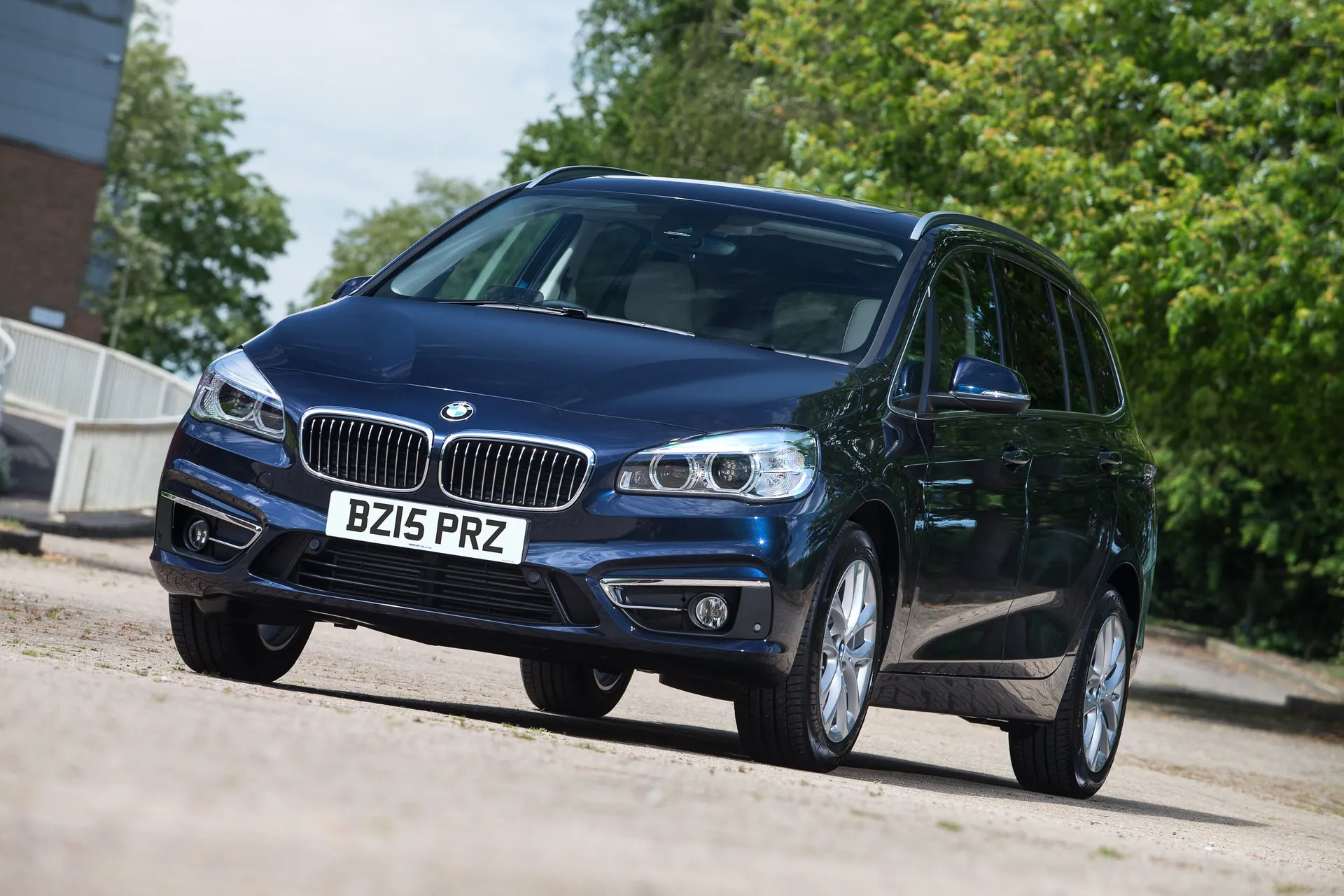
Those who are coming from a soft and stodgy MPV will be amazed, even today, at how crisp and tight the BMW seems. It has excellent steering, with a nice meaty feel, and you can zip along twisting roads without drama, rock or roll. It has a crispness that’s very rare indeed in MPVs, although it must be said, your passengers might not always like the cross-country speed at which you feel confident to drive.
Perhaps inevitably, ride quality wasn't as soft as some alternatives. Versions with larger alloy wheels thump a bit in town and pick out bumps that more traditional MPVs would soak up. But ride quality remains well controlled and the BMW doesn't heave or float over undulating roads – this can help keep car sickness at bay for some. Note that M Sport models had stiffer suspension and a 10mm lower ride height. BMW also offered Dynamic Damper Control variable suspension, which added back in a bit of comfort as well as control.
The real positive to the BMW’s set-up is how safe it feels, particularly with lots of passengers onboard. Driving people carriers can sometimes be a bit like guesswork, with stodgy body control and ultra-light, lifeless steering. Not the BMW 2 Series Gran Tourer, which makes the driver feel more reassured than perhaps any alternative in this sector.
What engines and gearboxes are available in the BMW 2 Series Gran Tourer?
The 216d engine was the entry-level motor but, with just 116PS, it hasn't the muscle to back up how well the BMW 2 Series Gran Tourer handles. Our advice is to search for the 150PS 218d. With a 2.0-litre four-cylinder engine, they had appreciably more power and, as a result, were more relaxing and easygoing to drive. You won’t have to rev it as much, and it also comes with the option of an automatic gearbox. The 216d is manual only.
Automatic gearboxes are preferable, because BMW autos work so well, making the most of the turbocharged engines. The manual gearbox had a sporty, snappy feel, but we thought the more relaxed self-shifter was better for this type of vehicle. Adding to the convenience, all 2 Series Gran Tourers had an electronic parking brake.
The 220d was, with 190PS, the potent-feeling choice, with 0-62mph taking just 7.8 seconds. It actually matched the 192PS 220i four-cylinder turbo petrol for acceleration. Those who want a more affordable petrol choice should look for the 1.5 three-cylinder 218i, which produced 136hp for 0-62mph in 9.8 seconds.
The xDrive four-wheel drive option available on 220d versions gave enhanced traction and grip on wintery roads. If you want the security and all-year-round ability of an SUV, but still need the practicality of an MPV, it’s a good choice. Even today, not many people carriers offer a four-wheel-drive option.
Refinement and noise levels
Refinement was generally pretty good. Noise levels at speed were low, with only models with larger wheels sometimes causing appreciable disturbance: patter over bumps at slower speeds and a bit of tyre roar at higher speeds.
The turbo engines generally didn't have to be revved too hard, so they were not too intrusive. We’ve mentioned the need to rev the 216d to make faster progress – 218d and 220d versions were more refined simply because they have more in reserve. Both 216d and 218i three-cylinder engines made a bit of a throbby noise, while the four-cylinder engines in other variants sounded more conventional.
Want to drown it all out? Look for a model with the upgraded Harman Kardon sound system. It’s powerful, and clear and gives surprisingly studio-like audio quality to everyone within.
Safety equipment: How safe is the BMW 2 Series Gran Tourer?
On top of the core safety kit of multiple airbags and lots of ISOFIX child car seat mountings, all BMW 2 Series Gran Tourers came with a collision warning system with automatic emergency braking. Rear parking sensors were standard, as were automatic headlights and rain-sensing wipers.
Add-on safety options included a head-up display, stop-and-go radar cruise control that can keep set distance from the car ahead even if its speed varies, plus a comprehensive park assist system. A spare wheel wasn't included, though, BMW supplied a tyre repair kit instead.
Euro NCAP hasn’t tested the seven-seat BMW 2 Series Gran Tourer, but it did assess the related five-seat 2 Series Active Tourer in 2014. It earned a full five-star rating, with 84 percent for driver protection, 85 percent for child protection and 70 percent for advanced safety assist features.
MPG and fuel costs: What does a BMW 2 Series Gran Tourer cost to run?
"The BMW 2 Series Gran Tourer was a very fuel-efficient seven-seater, particularly the entry-level 216d. This version officially returned an amazing 68.9mpg and should be the pick of the range for those seeking maximum miles per gallon. Our choice would be the 218d, though: it had more pulling power yet, at 64.2mpg, wasn't so far behind the 216d."
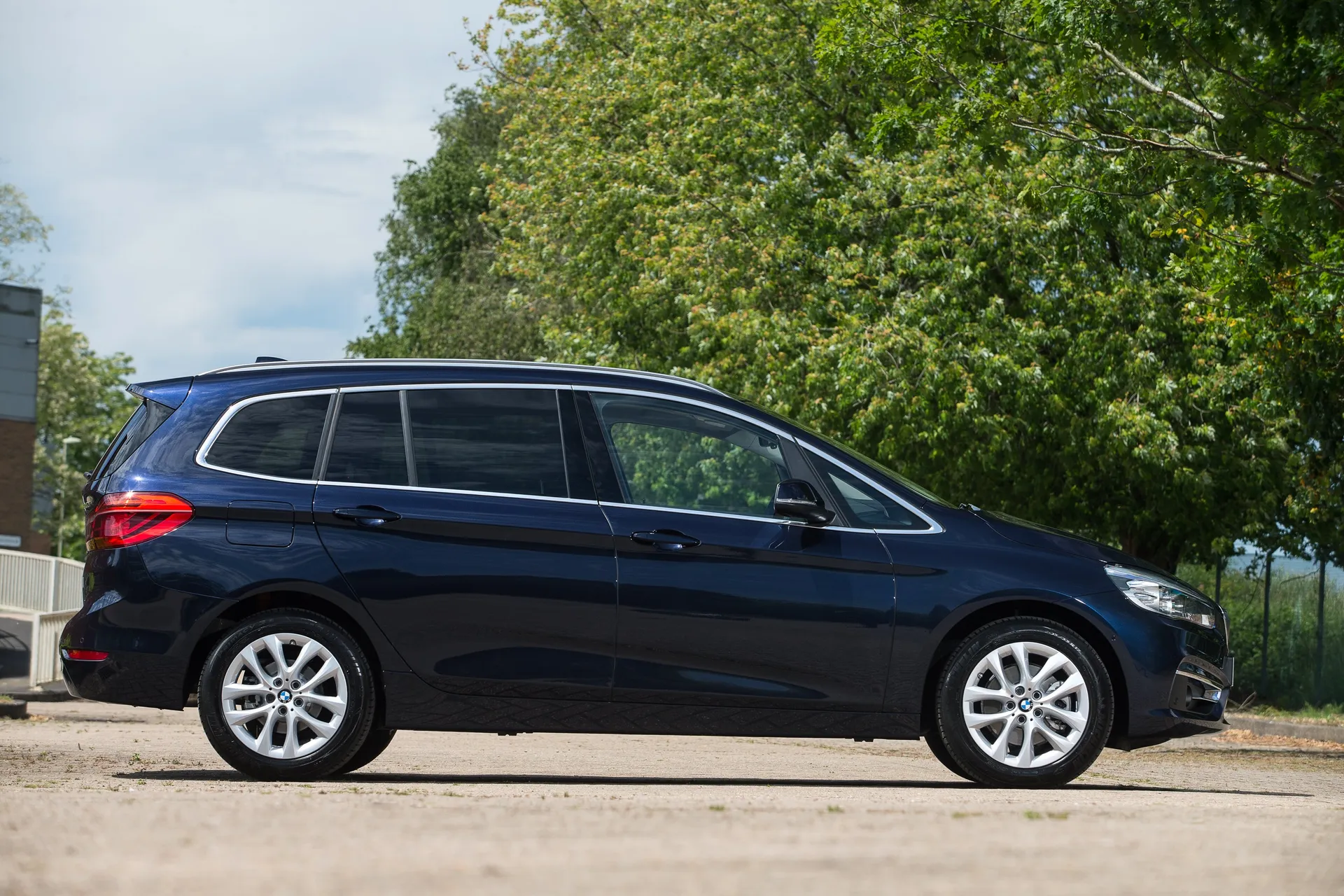
The 218i had the benefit of running on petrol, so fuel costs were cheaper per litre, and it averaged a perfectly decent 53.3mpg – not bad for a commodious seven-seater. If you seek an automatic gearbox, the average economy will dip slightly to around 52.3mpg.
The grippy 220d xDrive was a really good alternative to a full SUV in this regard. Averaging 57.6mpg, it was likely to be more economical than almost every comparable 190PS alternative, adding further to its ‘thinking person’s 4x4’ credentials.
BMW 2 Series Gran Tourer reliability and warranty
BMW didn't top the chart in the latest HonestJohn.co.uk Satisfaction Index,and the closely related BMW 2 Series Active Tourer came in the top 20 worst cars at 88.81 percent. Still, as the Gran Tourer shares a lot of DNA with the Active Tourer and other BMW and MINI models it should be fairly reliable.
BMW 2 Series Gran Tourer insurance groups and costs
The BMW 2 Series Gran Tourer should still be cost-effective to insure. Ratings start from an affordable group 10, perhaps because it’s a model with a safer, more family-focused driver profile than some of BMW’s sportier models. Keeping power outputs under control is another factor – that’s why the 220i and 220d might be appreciably more expensive to insure, given their 190PS power outputs.
VED car tax: What is the annual road tax on a BMW 2 Series Gran Tourer?
Great fuel economy is a by-product of low CO2 levels, and the BMW 2 Series Gran Tourer does not disappoint here. If keeping costs low is a priority, bearing in mind this is a BMW, then opting for an early (pre-1 April 2017) 218d SE will have you parting with just £35 for road tax.
Most of the 220i models fall into Band F, meaning you'll be £220 lighter when taxing your car.
BMW 2 Series Gran Tourer price
"You can pick up an early 2015 BMW 2 Series Gran Tourer with high miles from less than £6,000 today."
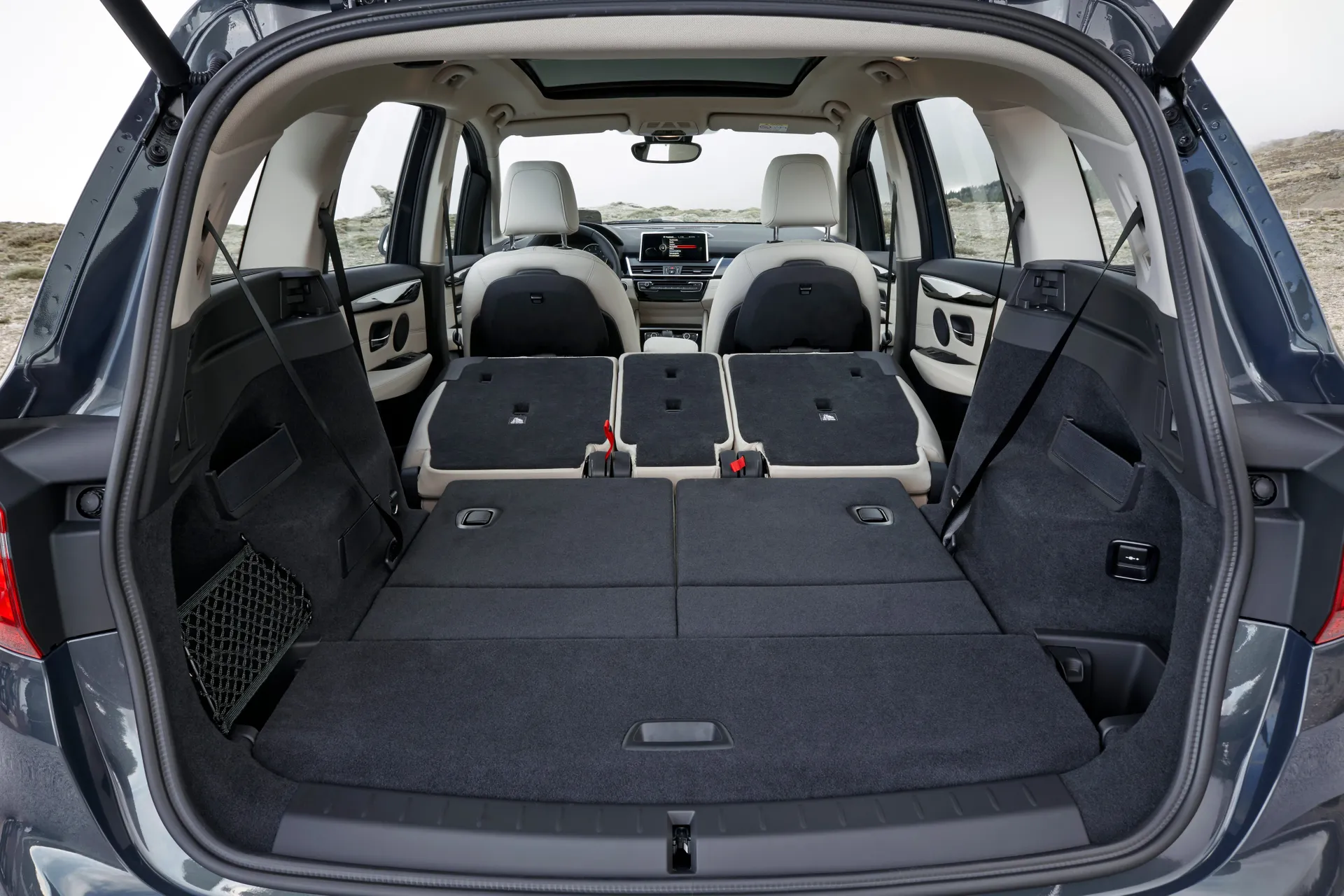
Our tip is to budget around £15,000, which will give you plenty of choice from five-year-old models – we discovered a good choice of 2018 Sport versions with either the 218i petrol or 216d diesel engine. M Sport versions with larger engines fall into a similar price bracket. We spotted a 2020 220i with 43,770 miles on the clock for just £15,000.
Fancy a four-wheel drive? Older cars are priced from £11,200, but if a full-fat newer car is what you seek, expect to part with north of £18,500.
Trim levels and standard equipment
The range opened with SE grade. This had dual-zone climate control, front fog lamps, rear parking sensors, 16-inch alloy wheels, 6.5-inch BMW iDrive infotainment with sat nav, a front armrest, an electronic parking brake, Bluetooth with audio streaming and a BMW Driving Experience Control switch (which alters various settings from Comfort to Sport).
Next, was the Sport, which had larger (and better-looking) 17-inch alloys, gloss black body detailing and sports seats. In contrast, Luxury versions had chrome trim, wood-effect interior trim and leather upholstery. The most desirable was the M Sport, which has 18-inch alloys, an M Aerodynamics styling package, leather sports seats and an M-branded multi-function steering wheel.
Ask the heycar experts: common questions
Is the BMW 2 Series Gran Tourer being discontinued?
Is the BMW 2 Series Gran Tourer a seven-seater?
What is the difference between the BMW 2 Series Gran Tourer and Active Tourer ?
Get our latest advice, news and offers
Keep me updated by email with the latest advice, news and offers from heycar.
By submitting you agree to our privacy policy
